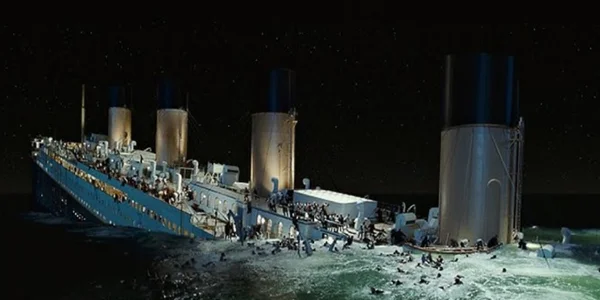The story of the RMS Titanic is one of the most infamous maritime disasters in history. Touted as the “unsinkable ship,” the Titanic met its tragic end on April 15, 1912, when it struck an iceberg in the North Atlantic and sank, claiming the lives of over 1,500 passengers and crew. While popular media often romanticizes the ship and its ill-fated voyage, there are several disturbing facts about the Titanic that are rarely discussed — and they make the story even more chilling.
Here are 10 disturbing facts about the Titanic, backed by the latest findings and research in 2025.
1. The Lifeboat Shortage Was Entirely Avoidable

Perhaps the most shocking aspect of the Titanic tragedy was its lack of lifeboats. The ship carried only 20 lifeboats — enough for about 1,178 people — even though it had over 2,200 passengers and crew on board. Ironically, the ship could have carried up to 64 lifeboats, but White Star Line decided against it to preserve the luxury aesthetic and deck space.
⚠️ Regulations at the time were outdated, based on ship tonnage, not passenger capacity — a fatal oversight.
2. Many Lifeboats Left Half-Empty
Even more horrifying is the fact that many lifeboats left the ship half-empty during the evacuation. Lifeboat No. 1, for example, had a capacity of 40 but departed with just 12 people. Poor training, panic, and lack of coordination contributed to this disastrous inefficiency.
Hundreds more lives could have been saved with proper lifeboat management.
3. Third-Class Passengers Were Trapped Below Deck
The Titanic’s strict class divisions were deadly. Many third-class (steerage) passengers, mostly immigrants hoping for a new life in America, were effectively trapped below deck due to locked gates and delayed notifications about the sinking. These barriers were designed to comply with U.S. immigration laws — but they became death traps.
Only about 25% of third-class passengers survived, compared to 62% of first-class.
4. The Lookouts Had No Binoculars
The iceberg might have been spotted sooner if Titanic’s lookouts had binoculars. But due to a last-minute crew change, the keys to the locker containing them were lost. The new lookout crew had to rely solely on their eyes — on a moonless night in freezing conditions.
This simple equipment error may have cost hundreds of lives.
5. The Ship Broke in Half — But Survivors Were Ignored
For decades, it was believed the Titanic sank intact. However, survivor accounts — often dismissed at the time — claimed the ship broke in two. When Robert Ballard discovered the wreck in 1985, it confirmed that the ship had indeed split before sinking — exactly as some survivors had reported.
Early dismissal of eyewitness accounts delayed the truth for over 70 years.
6. The Californian Was Nearby — and Did Nothing
The SS Californian, another ship in the vicinity, was just 10-20 miles away when the Titanic was sinking. It saw Titanic’s distress rockets but did not respond, allegedly believing them to be celebratory fireworks. Its wireless operator had gone off duty, and communication was lost during crucial hours.
If the Californian had acted sooner, many more lives might have been saved.
7. The Crew Was Largely Inexperienced
Many crew members on the Titanic had been hastily hired just days before departure and were unfamiliar with the ship’s layout and emergency procedures. Lifeboat drills were either rushed or skipped altogether, contributing to chaos during the evacuation.
✈️ A full lifeboat drill scheduled for the day of the sinking was canceled without explanation.
8. Titanic’s Radio Operators Ignored Ice Warnings
Multiple ships sent iceberg warnings to the Titanic on April 14, 1912. Some were received, but others were either ignored or not delivered to the bridge due to heavy radio traffic. The Titanic’s Marconi operators were more focused on relaying passenger messages than navigational safety.
Crucial warnings from the SS Mesaba and SS Californian were never relayed to the captain.
9. Bodies Were Left Behind
After the sinking, recovery ships retrieved only about 340 bodies of the over 1,500 who died. Many bodies were left floating in the ocean, and others likely sank into the deep. Some were buried at sea; others were brought to Halifax, Canada. A chilling photo from the recovery missions shows body bags lined up on the decks of recovery ships.
Many families never recovered the bodies of their loved ones.
10. Some Survivors Were Villainized
While some survivors were hailed as heroes, others — especially men — were publicly shamed for surviving. J. Bruce Ismay, chairman of White Star Line, was lambasted in the press for saving himself while so many perished. Others faced media scrutiny, suspicion, or outright hostility, merely for surviving a disaster beyond their control.
Survivors often carried emotional trauma for the rest of their lives — worsened by public judgment.
Final Thoughts: A Legacy of Lessons and Loss
The Titanic tragedy remains one of the most haunting events in modern history — not just because of the scale of death, but because so many of those deaths were preventable. From avoidable human error to callous class divides and systemic neglect, the disaster serves as a chilling reminder of what can happen when pride overrides prudence.



